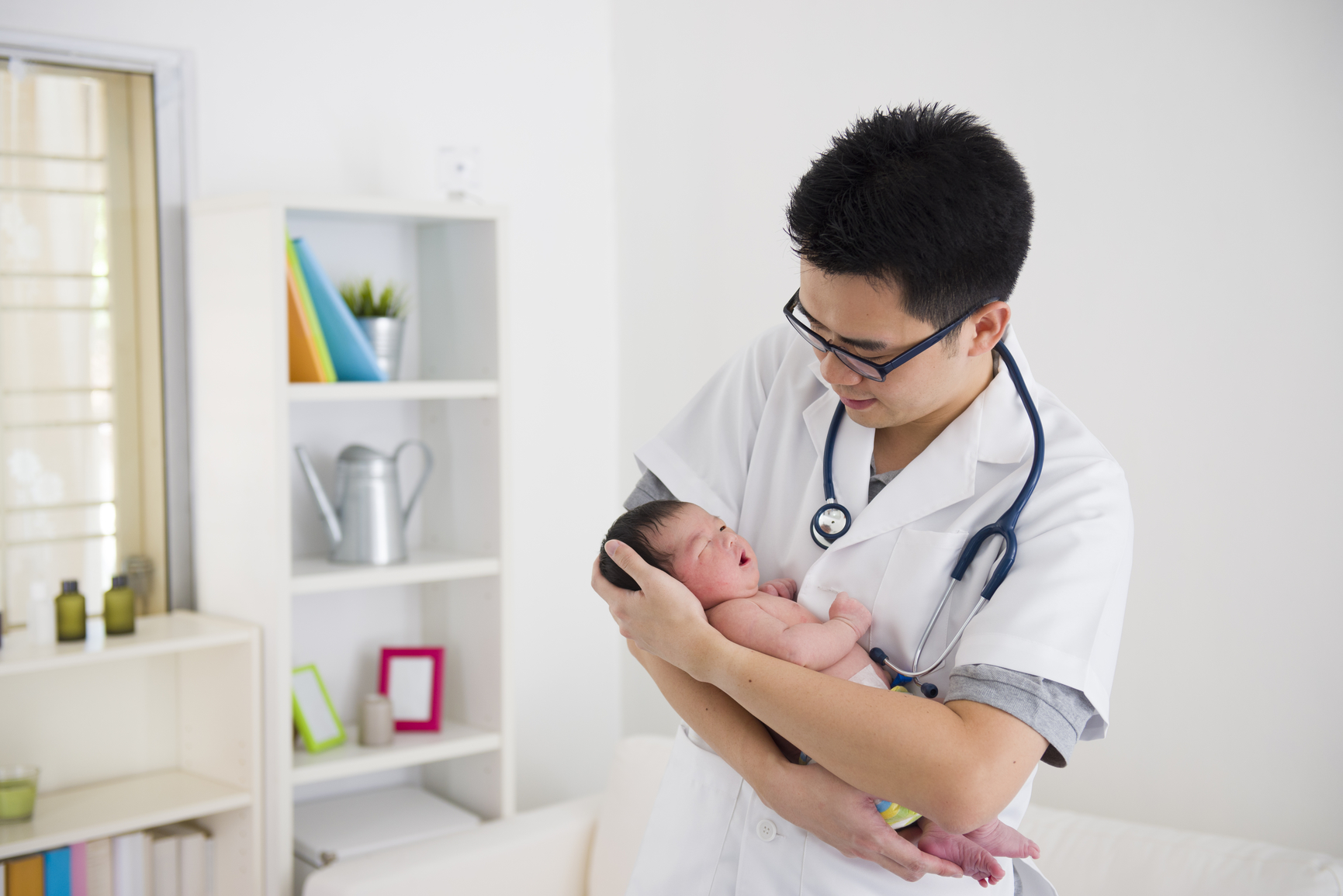
The Newborn Physical Examination includes specific screening tests to find out if your baby has any problems with their;
eyes
Where is the Newborn Physical Examination carried out
The newborn physical examination is usually carried out in the maternity hospital before you take your newborn home. Sometimes it’s done at a hospital or community clinic, GP surgery, children’s centre, or in your home.
Who is present?
Ideally, both parents should be present when the examination is done. The health professional examining your baby should explain what it involves. This could be a doctor, midwife, nurse or health visitor, and they will have had specific training to undertake the examination.
Does it hurt my baby?
Some parts of the examination may be a little uncomfortable for your baby, but it won’t cause them any pain. Your baby will need to be undressed for part of the examination.
The aim is to spot any problems early so treatment can be started as soon as possible. Usually, nothing of concern is found. If the health professional carrying out the examination does find a possible problem, they may refer your baby for more tests.
Next physical examination – 6-8 week check
You will be offered another physical examination for your baby at six to eight weeks, as some of the conditions that need to be diagnosed can take a while to develop. This second examination is usually done at your GP’s surgery.
How is the newborn physical examination done?
The health professional will give your baby a thorough physical examination. They will also ask you questions about
During the examination, the health professional will:
What health problems does the examination check for?
As well as an overall physical check the Newborn Physical Examination carries out four different screening tests.
Eyes
The health professional will check the appearance and movement of your baby’s eyes. They are also specifically looking for cataracts, which is a clouding of the lens inside the eye. Only about 2 or 3 in 10,000 babies are born with problems with their eyes that require treatment. However, the examination can’t tell you how well your baby can see because baby’s eyes aren’t fully developed at birth.
Heart
Your baby’s heart check is done by;
Sometimes heart murmurs are picked up on newborn babies. Heart murmurs are common in babies and are caused by a disturbed blood flow through the heart. The heart is normal in almost all cases where a murmur is heard but if your baby has a heart murmur they will be referred for a further assessment. Only about 1 in 200 babies has a heart problem that needs treatment.
Hips
Some newborns (especially premature babies) have hip joints that are not developed properly. This is known as developmental dysplasia of the hip (DDH). If left untreated, this can cause movement or joint problems. However, only 1 or 2 in 1,000 babies that have DDH need treatment.
Testicles
Baby boys are checked to make sure their testicles are in the right place. During pregnancy, the testicles form inside the baby’s lower abdomen. The testicles may not drop down into the scrotum until a few months after birth.
In about 1 in 100 baby boys, the testicles only descend partially (or not at all). Undescended testicles require treating to prevent possible problems later in life, such as reduced fertility.
Does my baby have to have a newborn physical examination?
The newborn physical examination is strongly recommended for your baby, but not compulsory. If you have any concerns, you should talk to your midwife or the health professional who is offering the examination.
When will I be informed of the findings?
The health professional carrying out the examination will give you the results straight away. They will tell you if your baby needs referring for more tests and discuss initial results at the examination.
These results will be recorded in your baby’s personal child health record (red book). If you have any concerns, you can discuss them with your midwife or the health professional who does the examination.